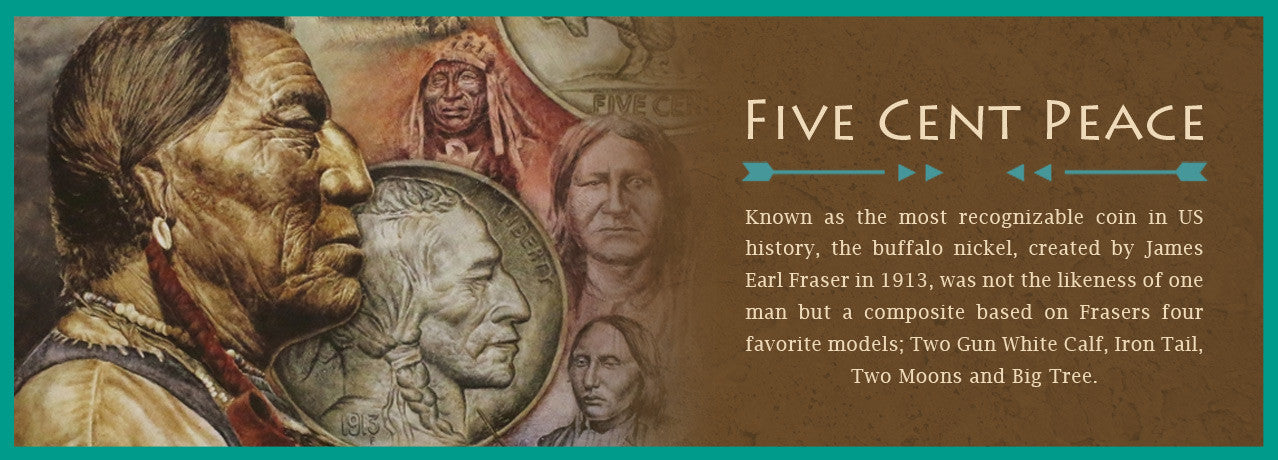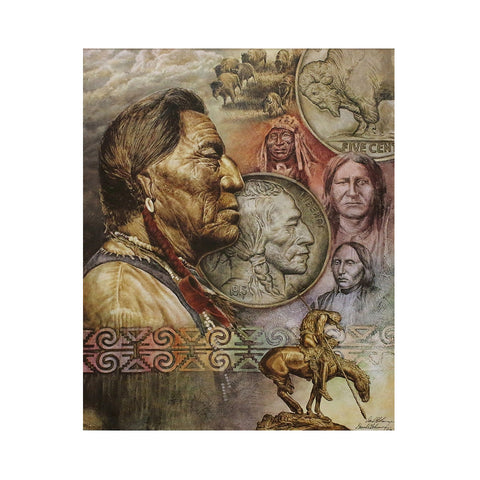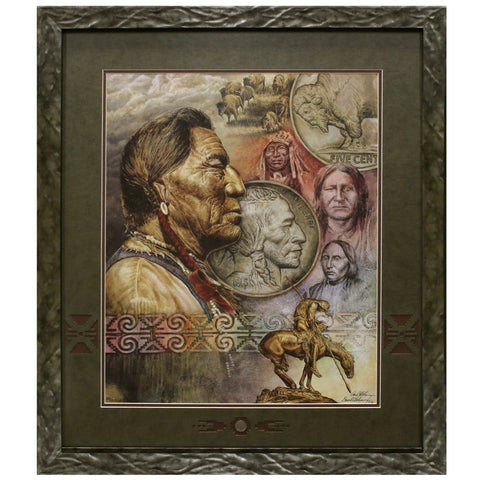
Five Cent Peace
The buffalo nickel is considered to be one of the most distinguishable American icons of this century. Its image alludes to the vital dependence the Native Americans had upon the buffalo; a relationship that would be changed forever. In the mid-1800's westward expansion was put into full gear with the emergence of the railroad. Being killed for their skins and tongues while others were shot from trains for mere sport, the next few decades witnessed the mass slaughter and near extinction of the buffalo.
At the turn of the century, many still bore testimony of this devastating incidence. Among them was well-known sculptor James Earle Fraser. Having been raised on the northern prairies of the Midwest, Fraser, in the early part of his life, developed an empathy towards the American Indian. (Those feelings resurfaced time and time again as he matured in his artistic abilities.) Amazingly, while only in his teens, he fashioned what would soon be acknowledged as the most famous sculpture of his career. This bronze, entitled "End of the Trail", graphically personified the plight of the American Indian and would later etch its image into the hearts and minds of generations to come.
In 1910, the United States Treasury Department was considering a replacement for the five cent piece. Fraser knew it was time to step into his own destiny. When his nickel was first introduced into the country in 1913, Fraser was questioned as to the identity of his model. The truth be known, Fraser had not one, but several Indians posed for him. Having been forced to break his silence, Fraser settled the controversy by revealing the composite as being Iron Tail, a Sioux, and Two Moons, a Cheyenne. History notes that Fraser could not recall the name of the third and last Indian.
With this mystery enduring to this day, many Indians have laid claim to this honor. Some reliable sources allege that the third model was Big Tree, a Kiowa. Laura Gardin Fraser, Fraser's wife and fellow sculptor, contended that he had posed for him prior to 1912. Other historians suggest that Two Guns White Calf, a Lakota, traveled by train to Washington, D.C. to sit for Fraser. Either case, what remains certain are the devout speculations that will continue for years to come.
Truly, James Earl Fraser, through his works of art, helped bend the heart of America towards its original occupants. He inspired many to take a long, hard look at a proud people whose hand and way of life was all but stolen from them. The buffalo nickel will forever be a window into the past, preserving the presence of our true American heritage.





